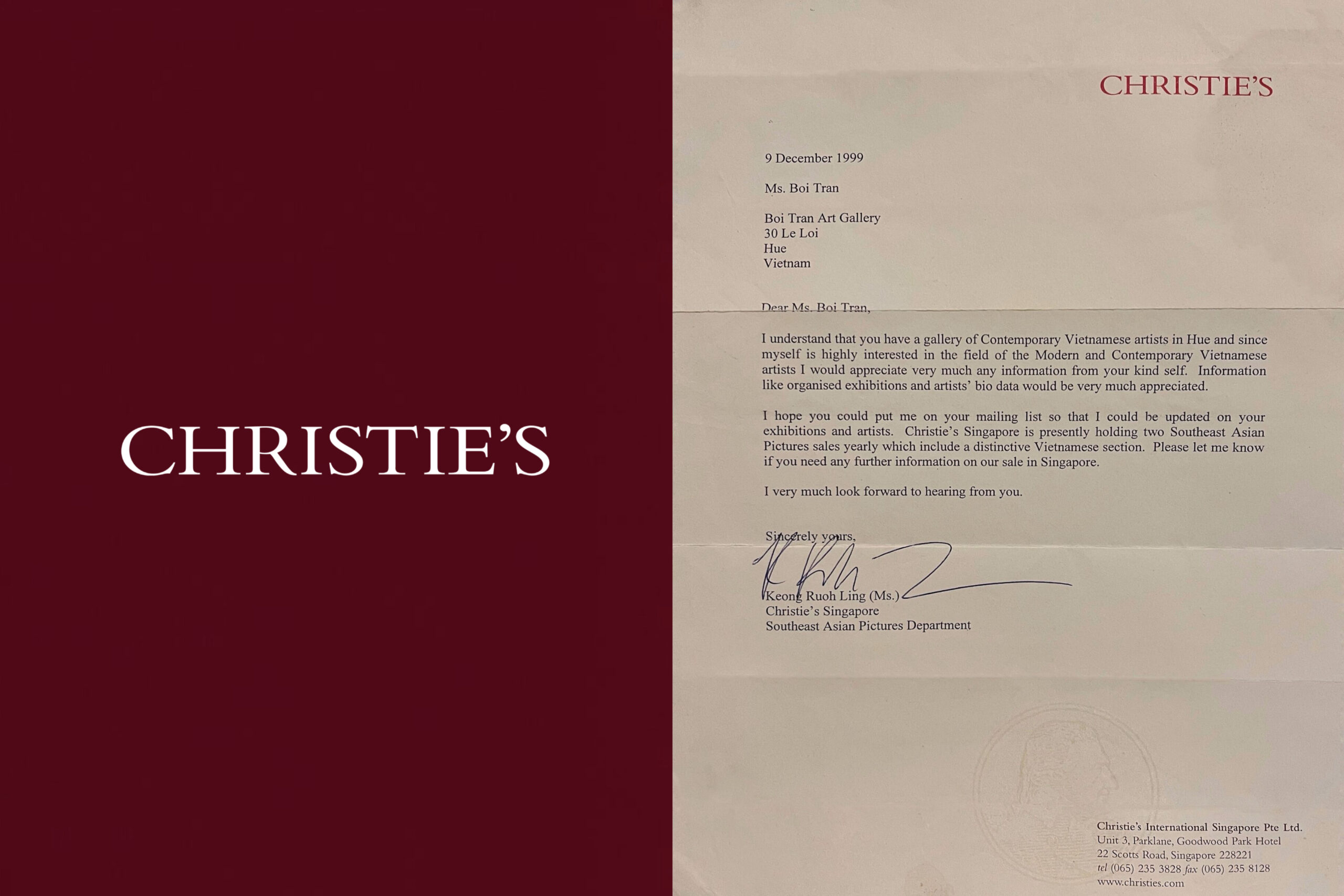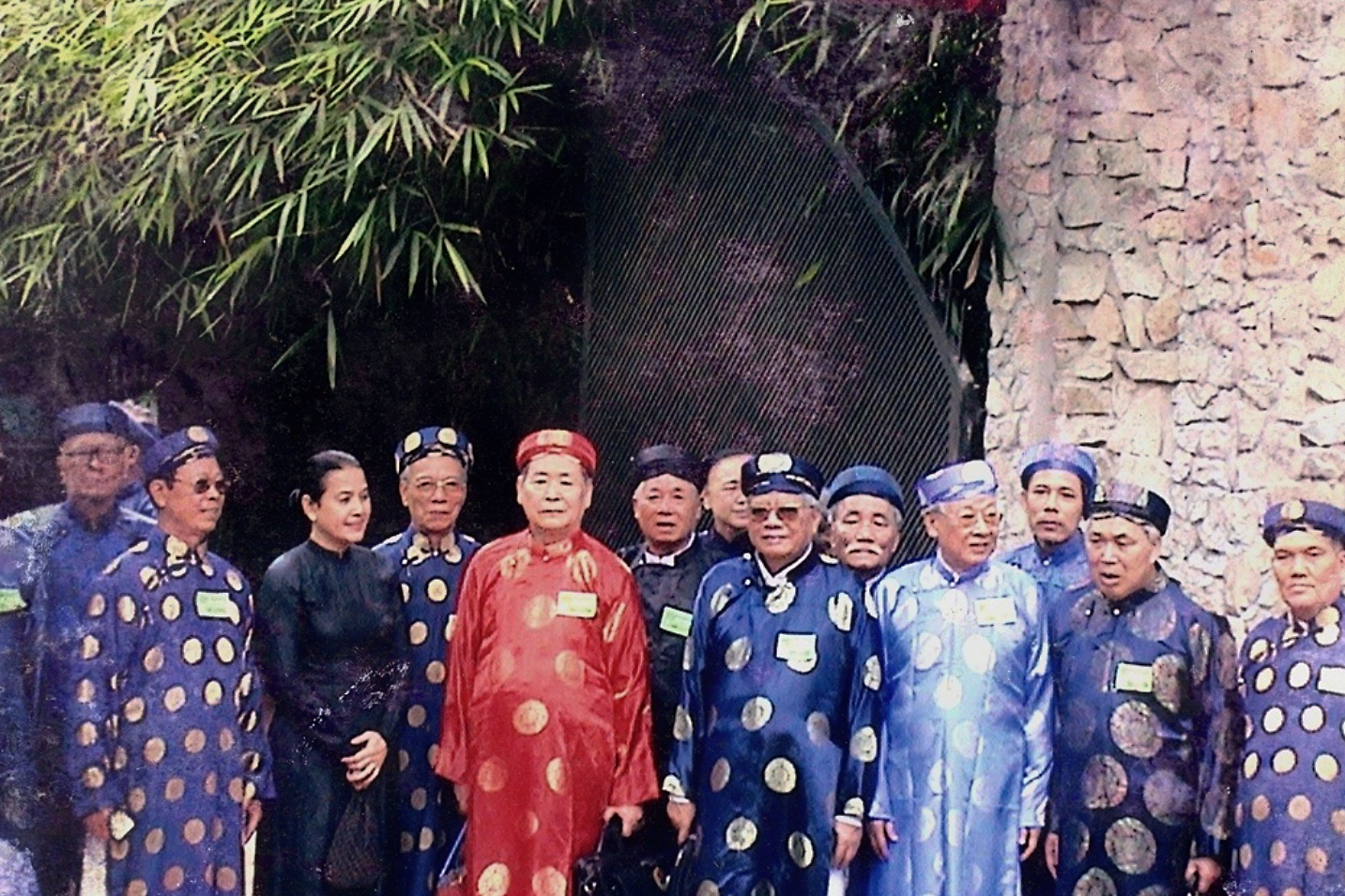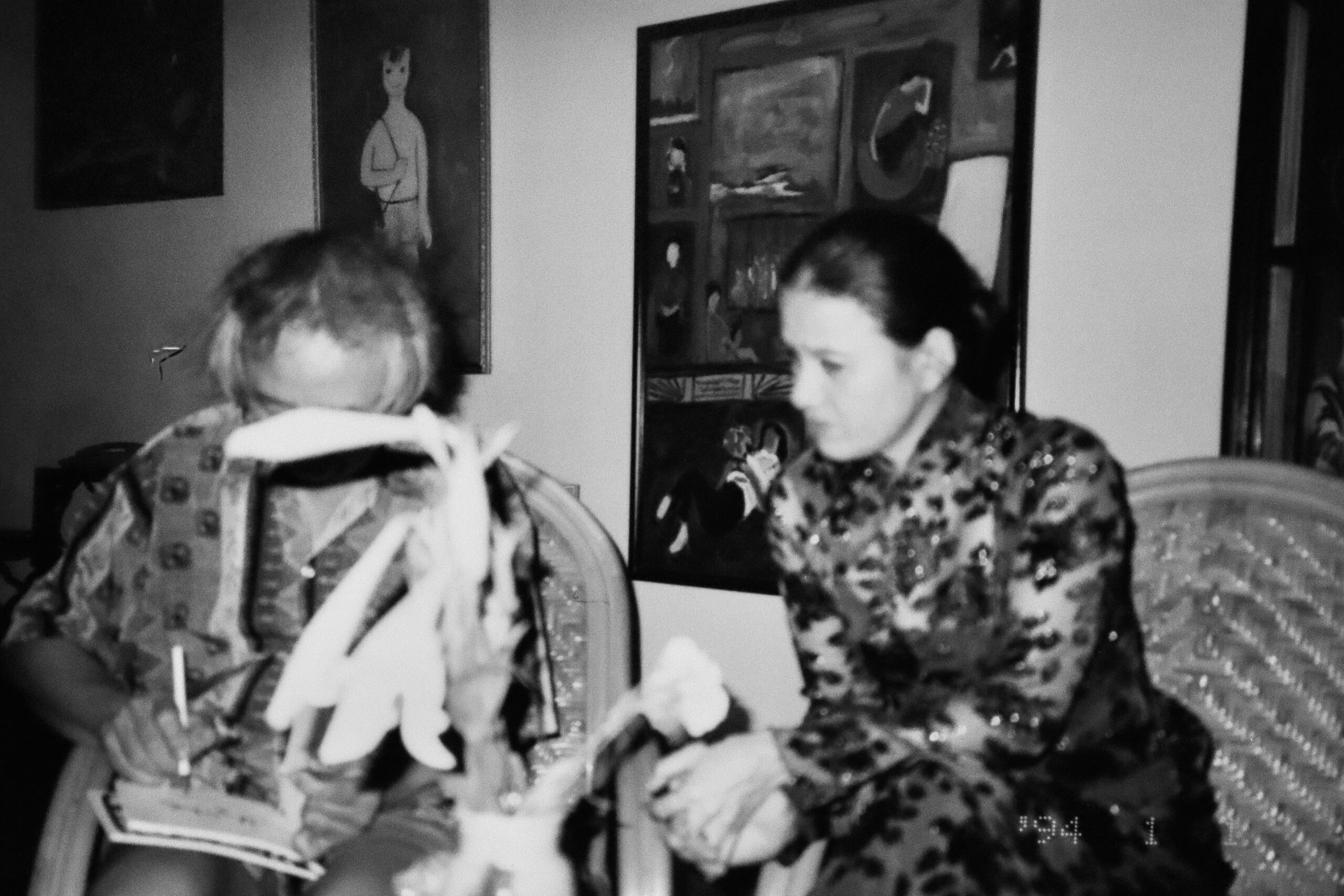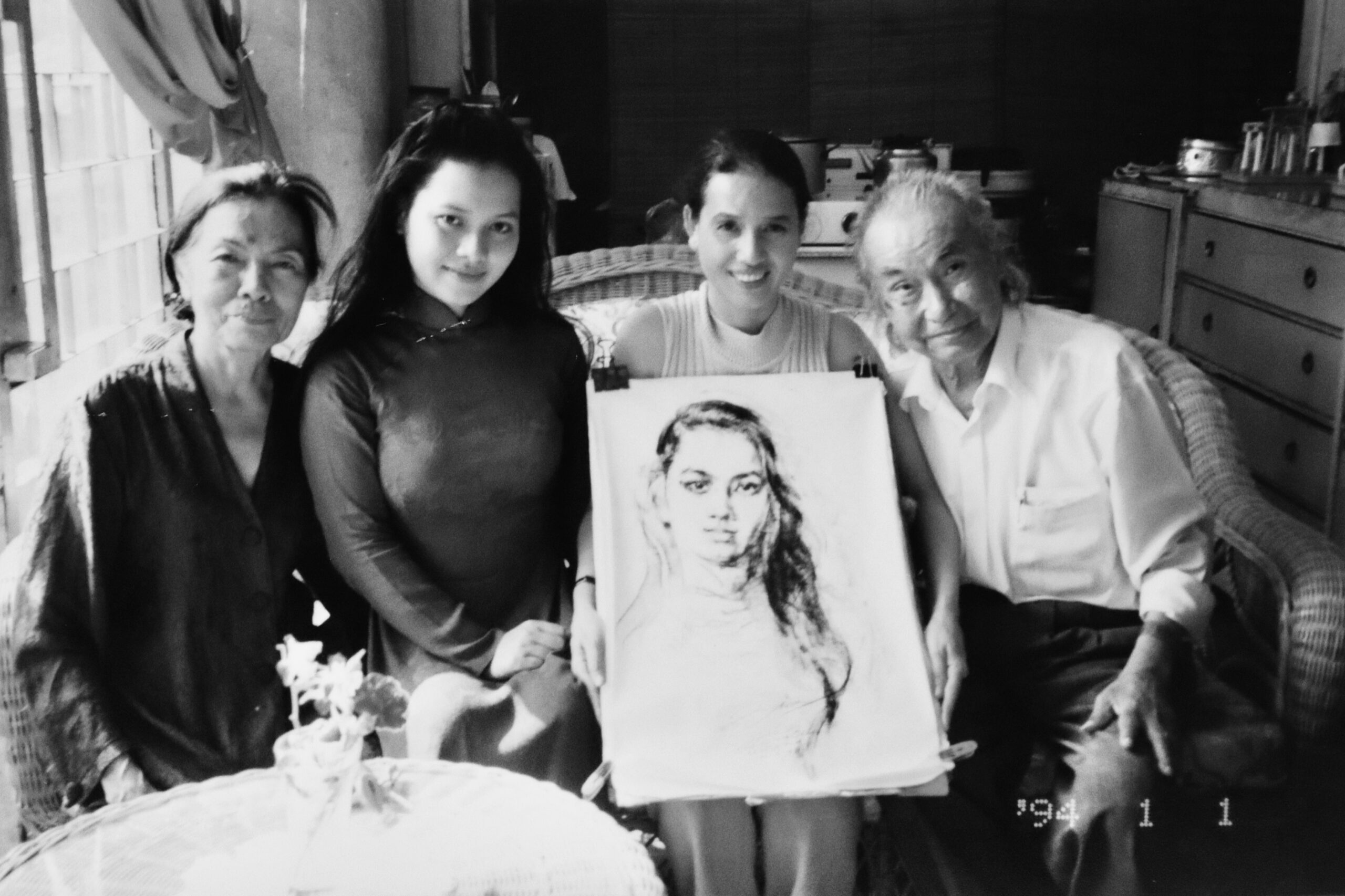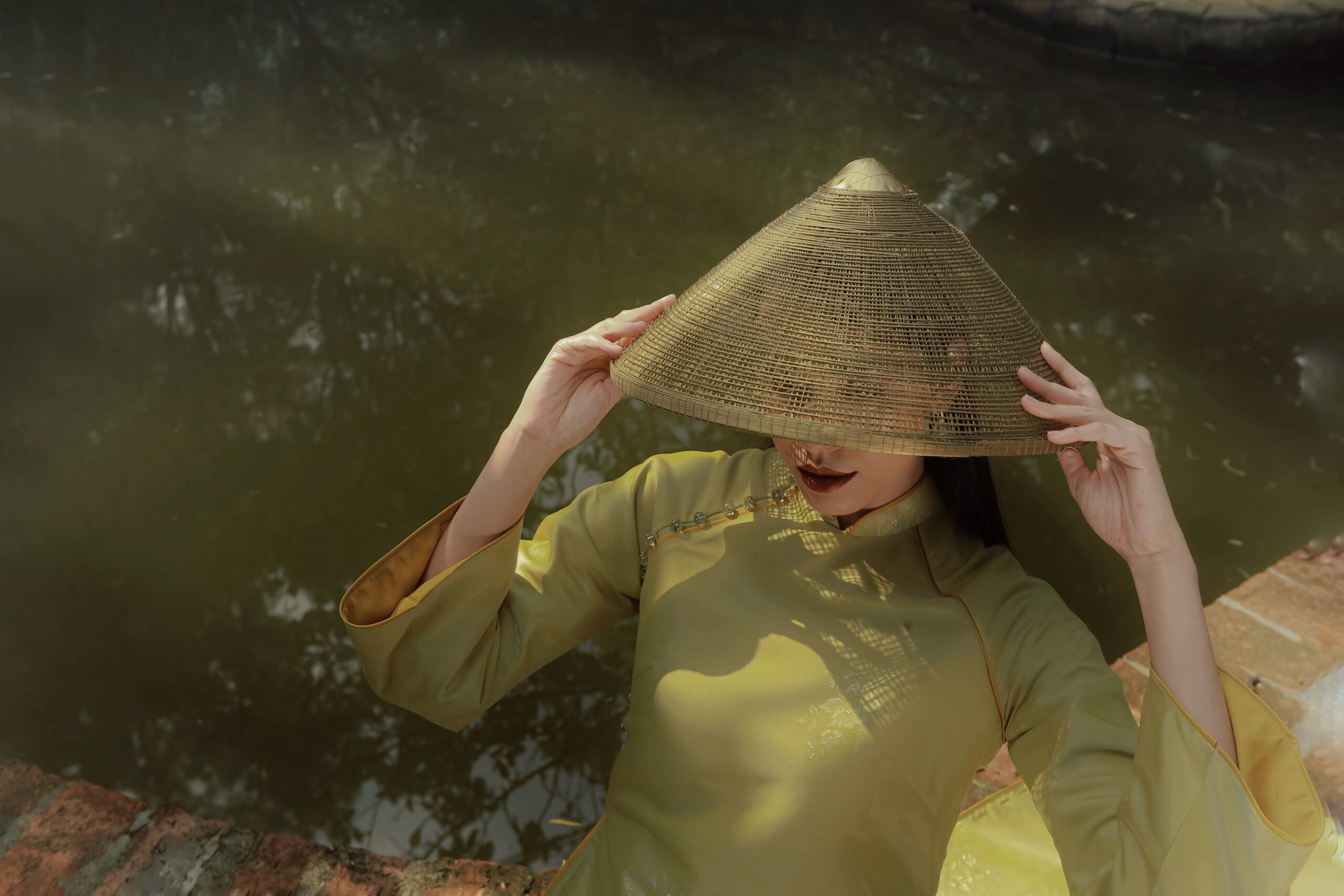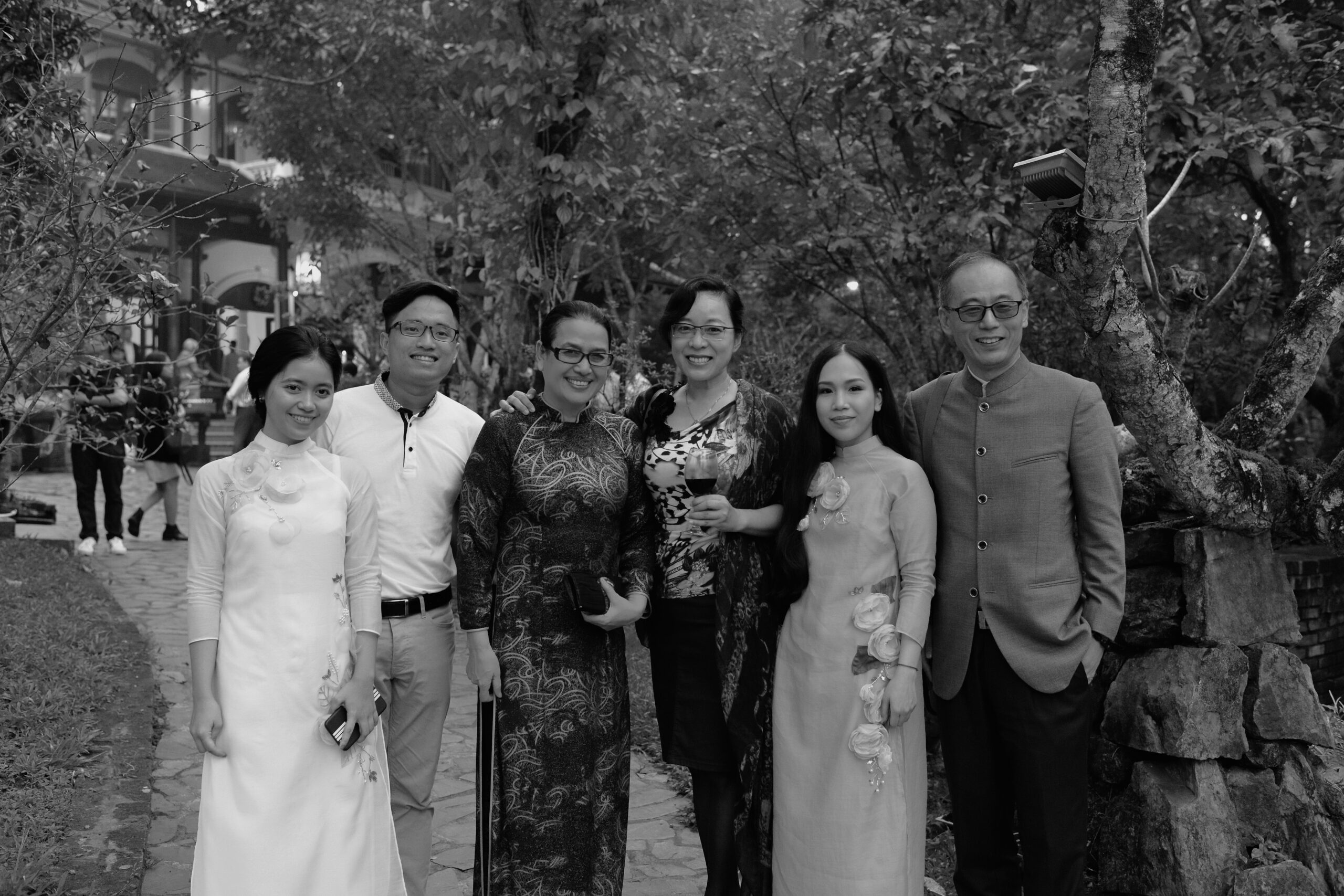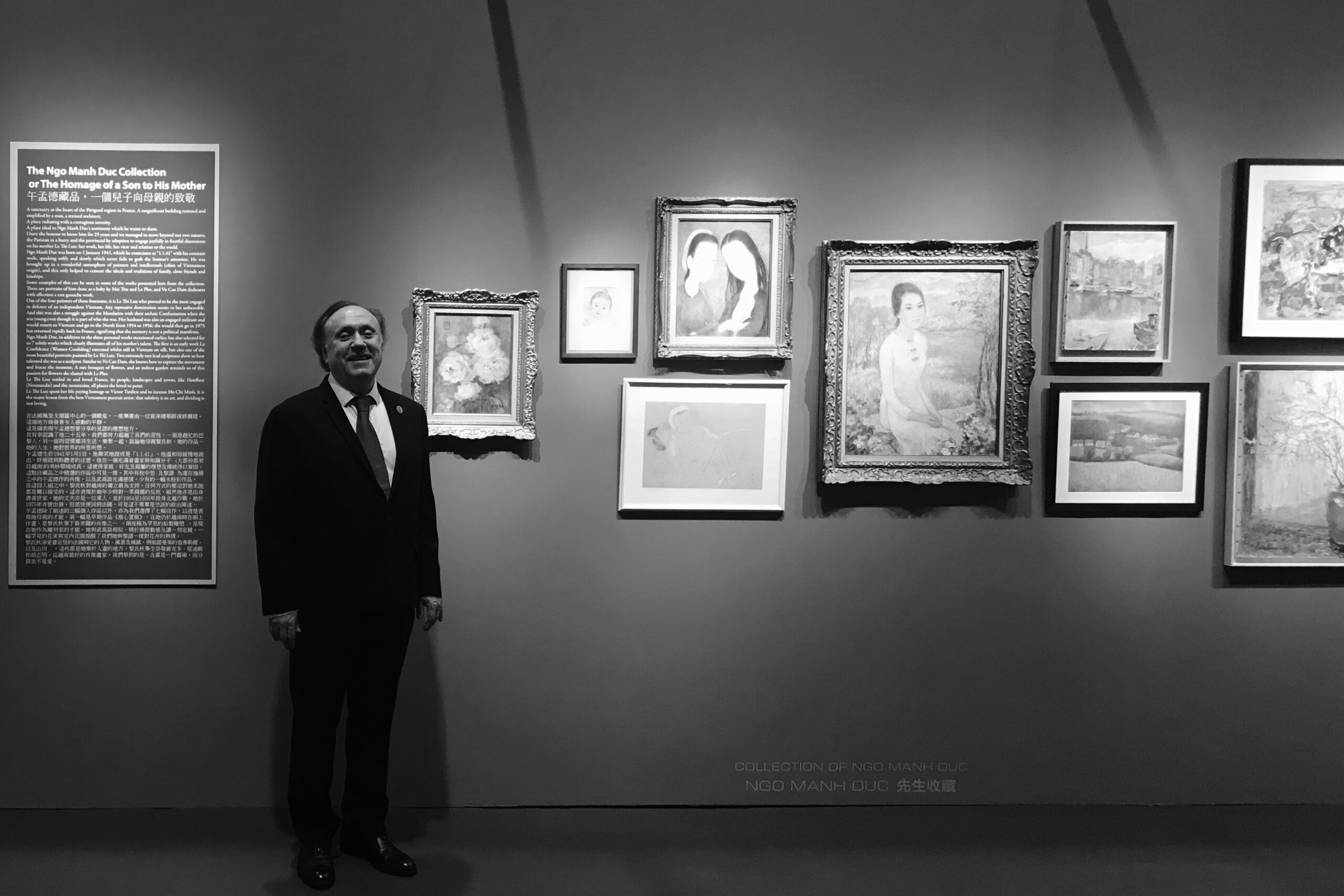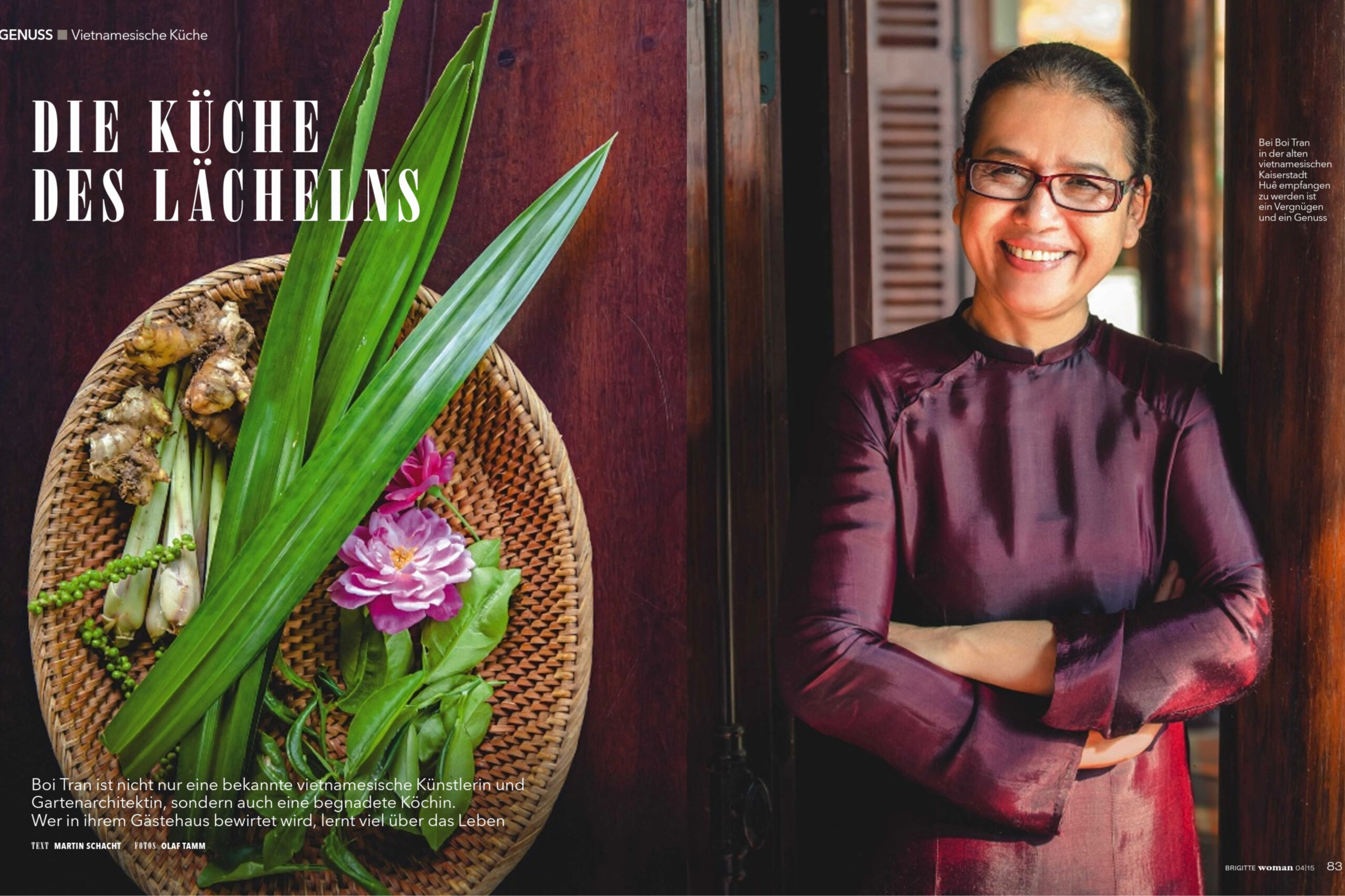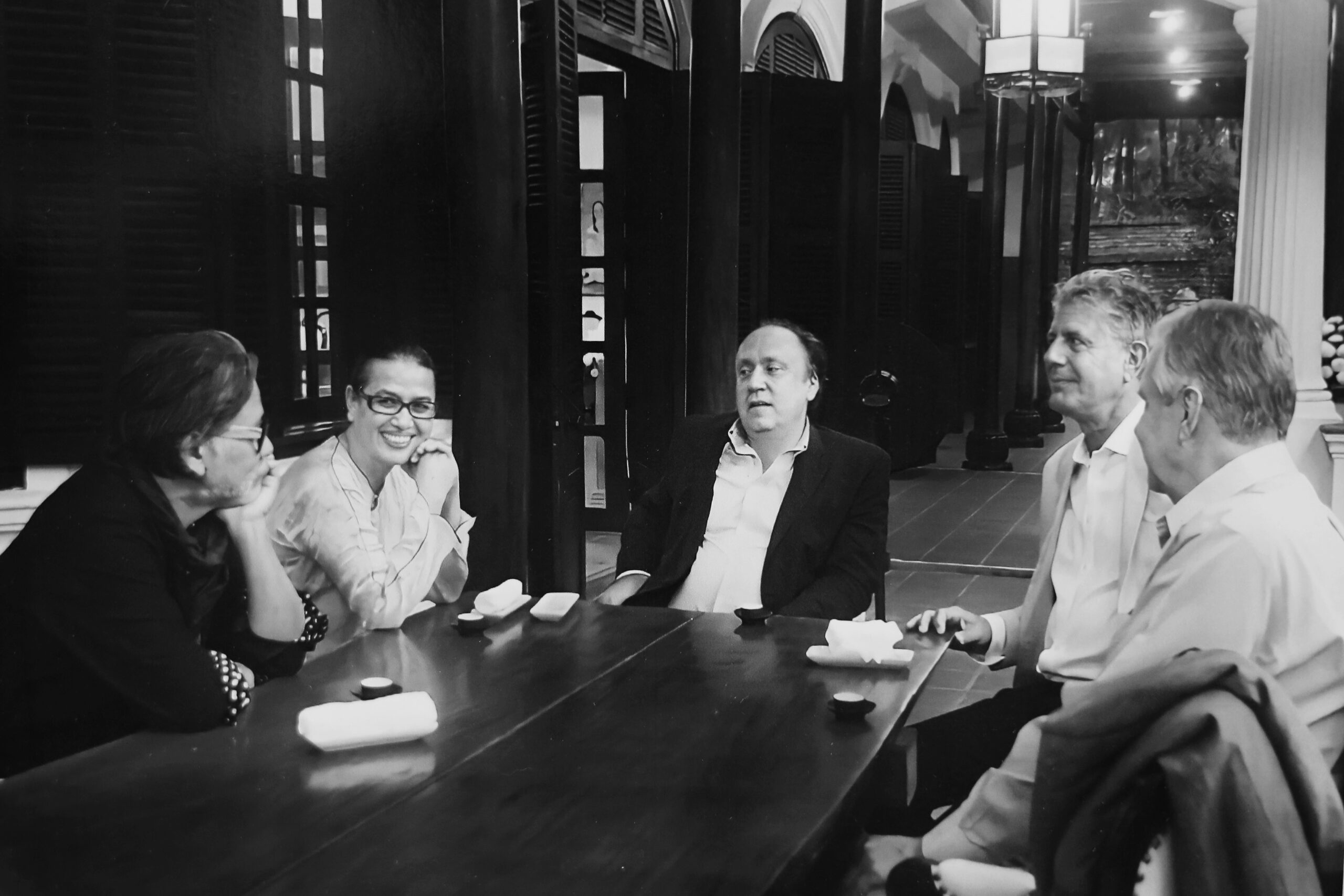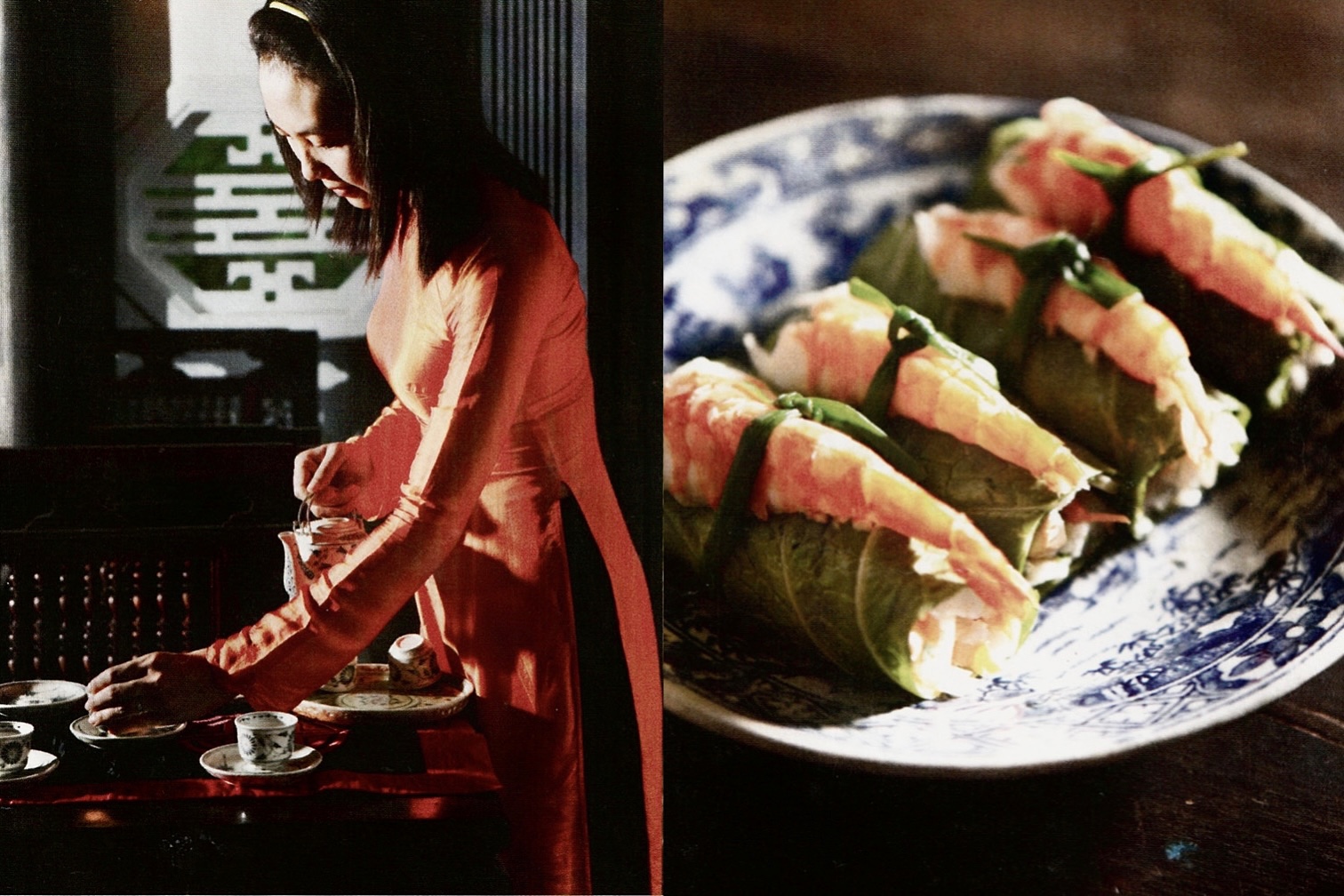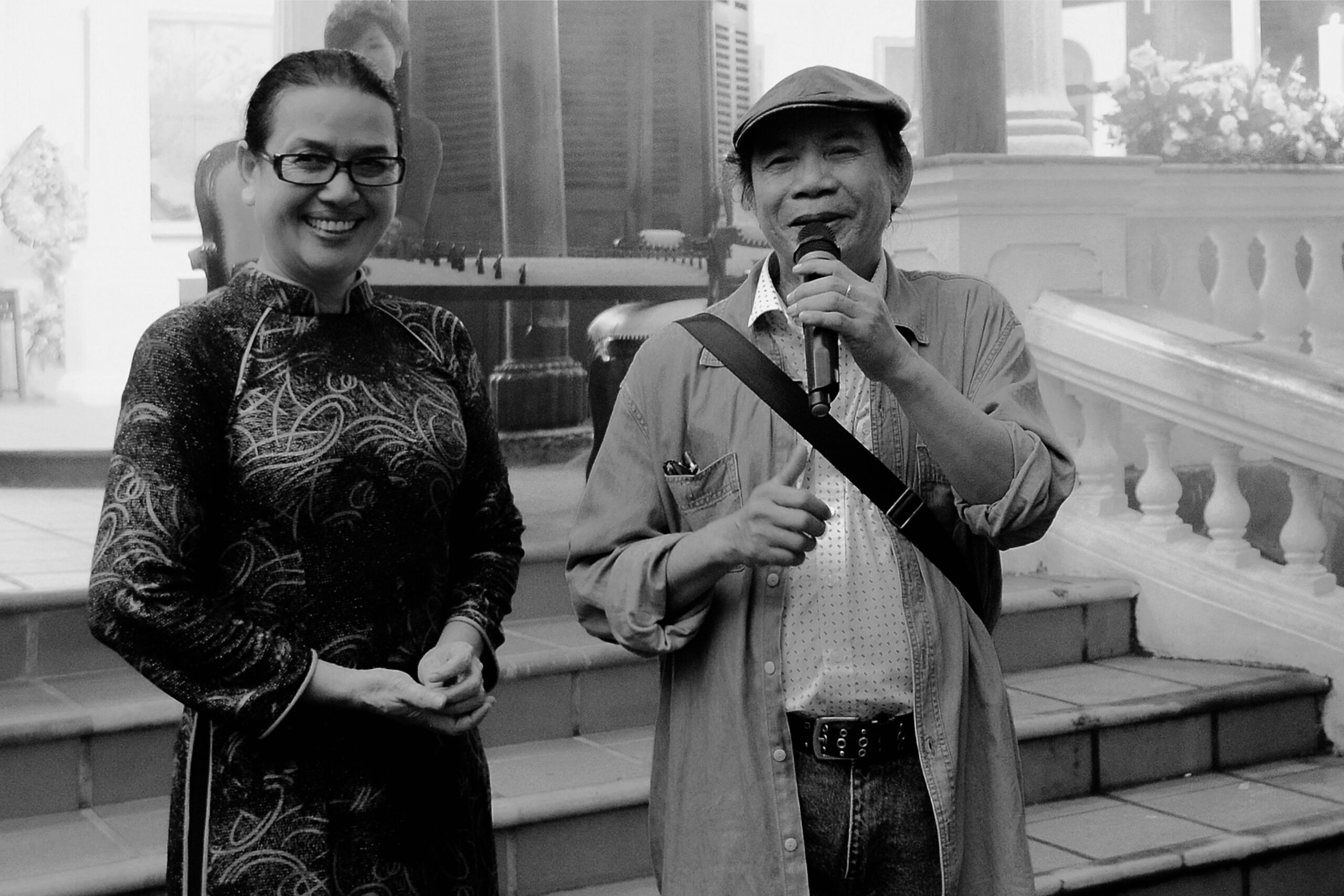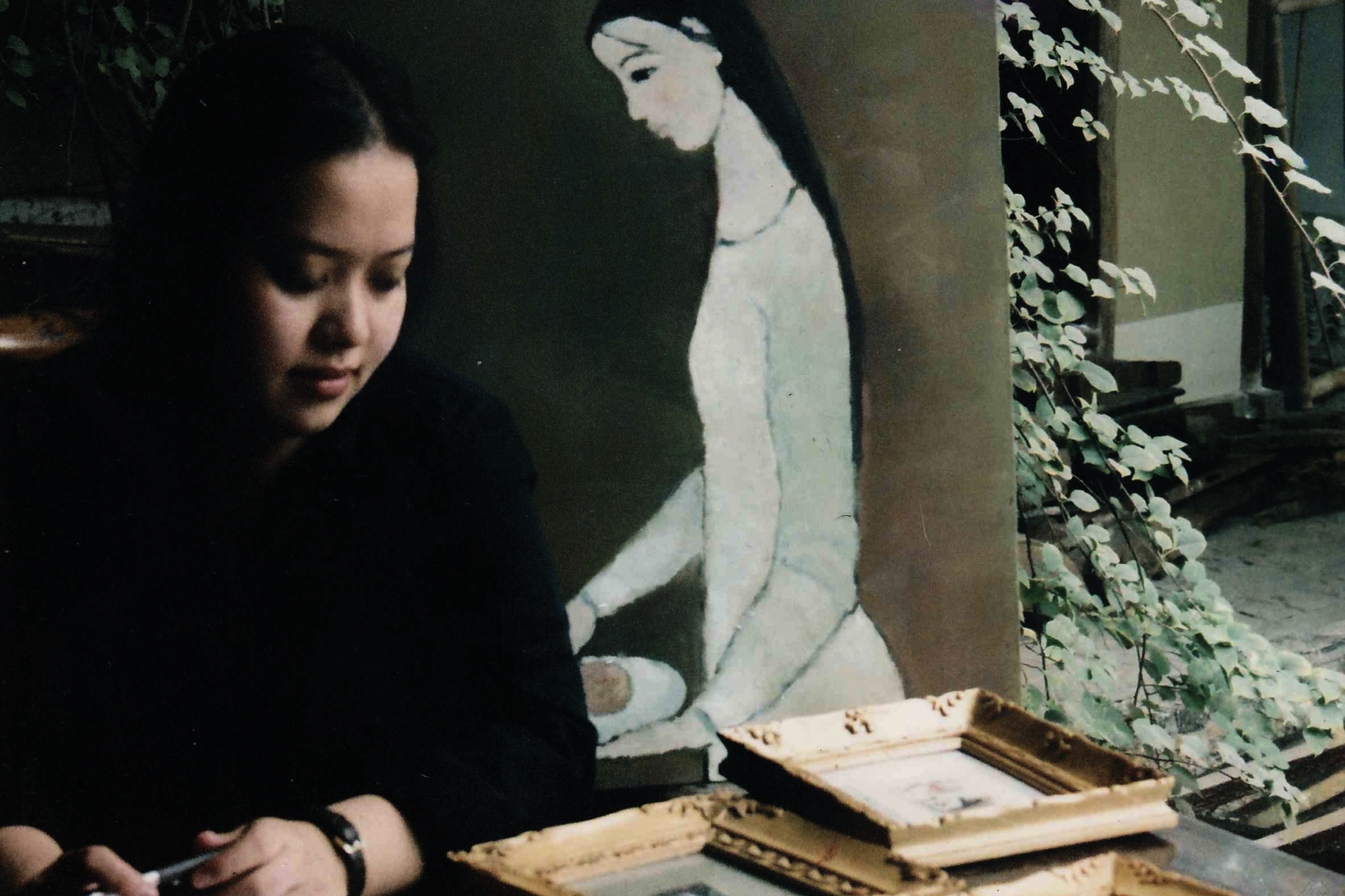Truong Be: A Quest For The Absolute and His Handwriting to Boi Tran

Truong Be is a great artist for the obvious reason that he is a true man who has been able to embody the history of his country even though he refrains from doing so. Behind his candid and alluring smile and beyond his stalwart posture, a strong character is revealed. Some people view this solid appearance as something almost akin to a threat.







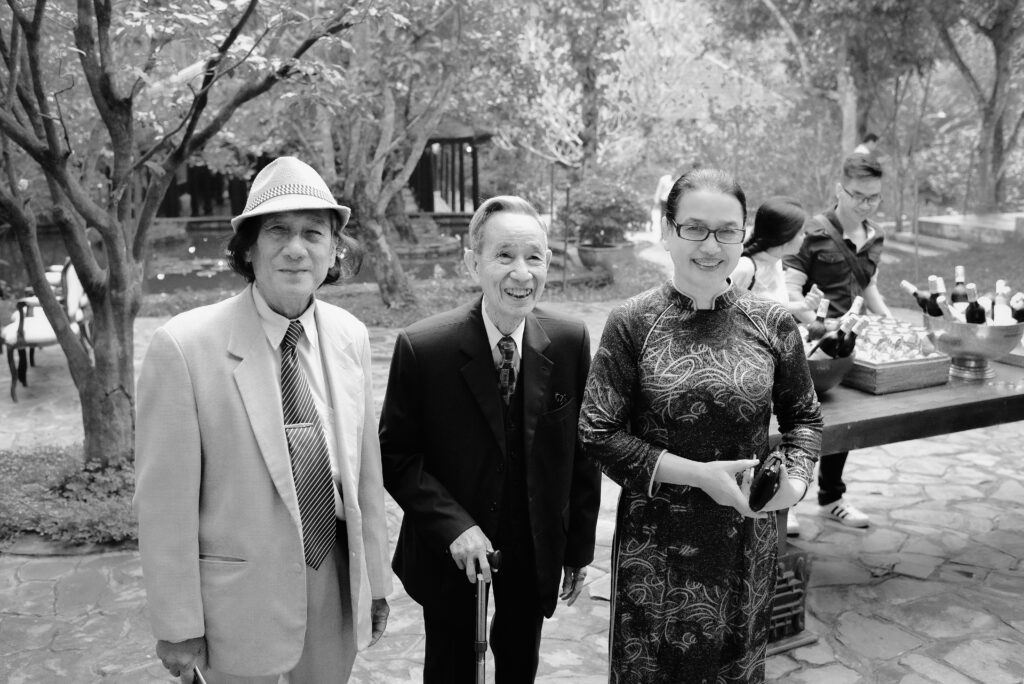



Just exactly what do you know about a person? His life?
It is simply what you find out about the world: nothing. The artist, however, affords us (at our own risk and peril) an interpretation of the world, hence a look at himself (“himself” in relation to the world; “himself” as an artist).
Ta biết được gì về một con người? Về đời của nó chăng?
Ta chỉ biết được những gì ta từng biết về cuộc đời: có nghĩa là chẳng biết gì. Tuy nhiên người nghệ sĩ mở ra cho ta (mặc cho ta làm gì thì làm) một cách diễn tả cuộc đời và cũng là một cách nhìn về nó (“nó” ở đây là cuộc đời; “nó” ở đây là nghệ sĩ).
Trương Bé is a great artist for the obvious reason that he is a true man who has been able to embody the history of his country even though he refrains from doing so. Behind his candid and alluring smile and beyond his stalwart posture, a strong character is revealed. Some people view a solid appearance as something almost akin to a threat.
Trương Bé là một nghệ sĩ lớn vì anh là một con người vốn là hiện thân của lịch sử đất nước mình dù anh không muốn thế. Đằng sau nụ cười thẳng thắn và khả ái của anh, vượt qua dáng đi bặm sị ấy, là cả một cá tính mạnh mẽ tỏa ra. Đối với một số người, nét vững chãi ngoại hình ấy có một cái gì như là trấn áp.
For me personally, it is sine qua non for bringing to light a genuine talent that I find amidst Vietnamese painting production when it was at its peak. In dealing with lacquer, Trương Bé is Nguyen Gia Tri’s equal.
Đối với tôi đó là điều kiện đương nhiên thoát ra từ một tài năng vững chắc mà tôi đặt lên chóp cao của nền tạo hình Việt Nam: trong cuộc thể nghiệm sơn mài, Trương Bé đứng ngang hàng với Nguyễn Gia Trí.
In his domain, namely art, he proves to be a happy man and he takes pride in this. His pride bears witness to his happiness and his happiness ennobles his pride. Those who know Vietnam will rightly identify in him not only this pride tinted with a touch of rudeness inherent in the men of Quang Tri (where he was born) but also the happiness tinted with some sadness characterizing the inhabitants of Hue (where he has been painting and teaching for a very long time now).
Sống trong nghệ thuật của mình, anh là con người diễm phúc và hãnh diện được như vậy. Hãnh diện làm bằng chứng cho diễm phúc và diễm phúc đăng quang cho hãnh diện. Chính những ai có biết đến đất nước Việt Nam sẽ tìm thấy nơi Trương Bé cái gốc tích của niềm hãnh diện ấy vốn nhuốm vẻ thô cứng như thế nào đó mà ta từng bắt gặp ở người dân Quảng Trị (nơi anh sinh ra) nhưng vừa là một tình trạng diễm phúc đượm một nỗi u sầu nào đó vốn làm nên tính cách con người Huế (là nơi anh vẽ và dạy học từ lâu nay).
Pride and sadness are the concepts that Vietnamese has adopted for its own sake all through its history. Far from being haughtiness, Vietnamese pride is the assertion of a destiny; Vietnamese sadness does not consist in tears but in a look at times blurred and drowned by a gently repressed broad smile.
Hãnh diện, u sầu, là những ý niệm mà đất nước Việt Nam giữ lấy cho mình trong suốt chiều dài lịch sử. Nét hãnh diện của Việt Nam không phải là tính cao ngạo mà là sự cầm chắc một định mệnh; cái u sầu của Việt Nam không phải là nước mắt mà là một cái nhìn, đôi khi rưng rưng chìm ngập vào một nụ cười rộng mở mà nhẹ nhàng cố nén.

Who is more Vietnamese than Truong Be? Nobody is. Some others are but differently. In this aspect, to be sure. He is second to none. To contemplate one of Truong Be’s works is to start out on a poetic search for the perfect technique. Each of his works deserves close scrutiny and calls for an adherence to his internal world.
Có ai là Việt Nam hơn Trương Bé? Không ai. Một số người là Việt Nam theo một cách khác nhưng chẳng còn ai Việt Nam như thế nữa. Nhìn ngắm một tác phẩm của Trương Bé là dấn thân vào một trình tự thơ mộng với kỹ thuật hoàn hảo. Một tác phẩm của Trương Bé xứng đáng được quan sát hồi lâu và thúc giục ta kết dính vào thế giới nội tại của họa sĩ.
His demand is total and puts us in mind of Y Lan who died in 1117:
BEING AND NON-BEING
Being is non-being, non-being is being
Non-being is being, being is non-being
He who does not cling to anything
Is the only one capable of living in perfect harmony with the Absolute?
Anh đòi hỏi tuyệt đối và tư thế đó khiến ta tưởng tới Ỷ Lan, vị vương hậu qua đời năm 1117:
CÓ KHÔNG
Có cũng là không, không cũng là có
Không cũng là có, có cũng là không
Có chẳng tựa vào gì
Chỉ như thế mới nhập được vào Tuyệt đối.
Chiefly when he expresses himself by means of lacquer (where painting on silk is concerned, lacquer is one of the significant contributions of Vietnamese painting art to the world’s one), Truong Be puts forth a language which is non-verbal yet replete with sounds, a vision which is void of images yet resplendent with colours.
Đặc biệt khi diễn đạt bằng sơn mài ( sơn mài, cùng với tranh lụa, là một trong những đóng góp thượng thặng của nghệ thuật hội họa Việt Nam vào nghệ thuật thế giới), Trương Bé đề ra cho chúng ta một ngôn ngữ không lời nhưng tràn đầy âm thanh, một nhãn quan không hình tượng nhưng vỡ òa màu sắc.
Truong Be has set his mind on dismantling the world, not to build it anew but to bolster it up. He illustrates this “impermanence of the world” mentioned by Nguyen Gia Thieu (1741-1798):
Trương Bé quyết tâm làm bung cấu trúc đời sống chẳng phải nhằm tái cấu trúc mà nhằm gánh lãnh lấy nó. Anh minh họa “cuộc đời vô thường” ấy như lời của Nguyễn Gia Thiều (1741-1798):
Countless people have gone through tribulations and trials!
They still retain their human forms; their hearts, however, are dead.
No wonder that the moment he is born, a human being cries to welcome life!
He has been able to overlook (or to move elsewhere) the lament to transform it into an ode.
Đòi những kẻ thiên ma bách chiết
Hình thì còn, bụng chết đòi nau!
Thảo nào khi mới chôn nhau
Đã mang tiếng khóc bưng đầu mà ra.
He has been able to portray the spirits of yore with a profusion of orange and gold where the lines craving for infinity are held back by unobtainable immortality. Conscious of this paradox, the painter never ceases giving preference to extremely large formats. We encounter here the quest of a lone but not isolated man, a passionate soul that has managed to subdue passion.
Anh đã biết vượt qua ( hoặc làm lệch dạng) khúc ngâm để chuyển hóa thành tụng ca. Từ các vong hồn quá khứ anh đã biết cách làm sinh sôi màu vàng cam lẫn màu vàng kim, trong đó những đường nét vốn muốn trôi về vô cực vẫn không thể nào bất tử. Anh ý thức được cái nghịch lý ấy nên chi càng ngày anh càng thiên về những khổ tranh thật lớn. Chúng ta chứng kiến tại nơi đây cuộc truy tìm của một con người đơn độc nhưng không lẻ loi, của một kẻ đam mê biết giao hảo với đam mê.
In witnessing this poetic quest so happily ended, how can we ever miss thinking of Nguyen Trai (1380-1442):
Trong cuộc truy tìm đầy thành tựu ấy lẽ nào ta không nghĩ tới Nguyễn Trãi (1380-1442):
POINT OF VIEW
Does it really matter if a nobleman is clad in slovenly clothes beneath his dignity?
All that we have to do is follow the path of the sages of Yore
With a cup of tea perfumed with the scent of apricot flowers
I wake up at night to gaze at the moon
During springtime I read and punctuate my books
Careers involving honour bring nothing but anguish and humiliation
In a foolish secluded life there lies liberty
Of my peers a great many are gone
Like paulownia leaves scattered when autumn comes to a close.
NGÔN CHÍ
Lảo thảo chưa nên tiết trượng phu
Miễn là phỏng dáng đạo tiên nho
Chà mai đêm nguyệt dậy xem bóng
Phiến sách ngày xuân ngồi chấm câu
Dưới công danh đeo khổ nhục
Trong dại dột có phong lưu
Mấy người ngày nọ thi đỗ
Lá ngô đồng thuở mạt thu.
The pride of Hanoi, the strength of Quang Tri, the nobility of Hue and the sweetness of Budapest, all those stages and landmarks have successfully come to make a road a highway.
Niềm hãnh diện của Hà Nội, cái mạnh mẽ của Quảng Trị, quý phái của Huế, nhẹ nhàng của Budapest, bấy nhiêu chặng và mốc đã chuyển một đường đi thành đường đạo.




